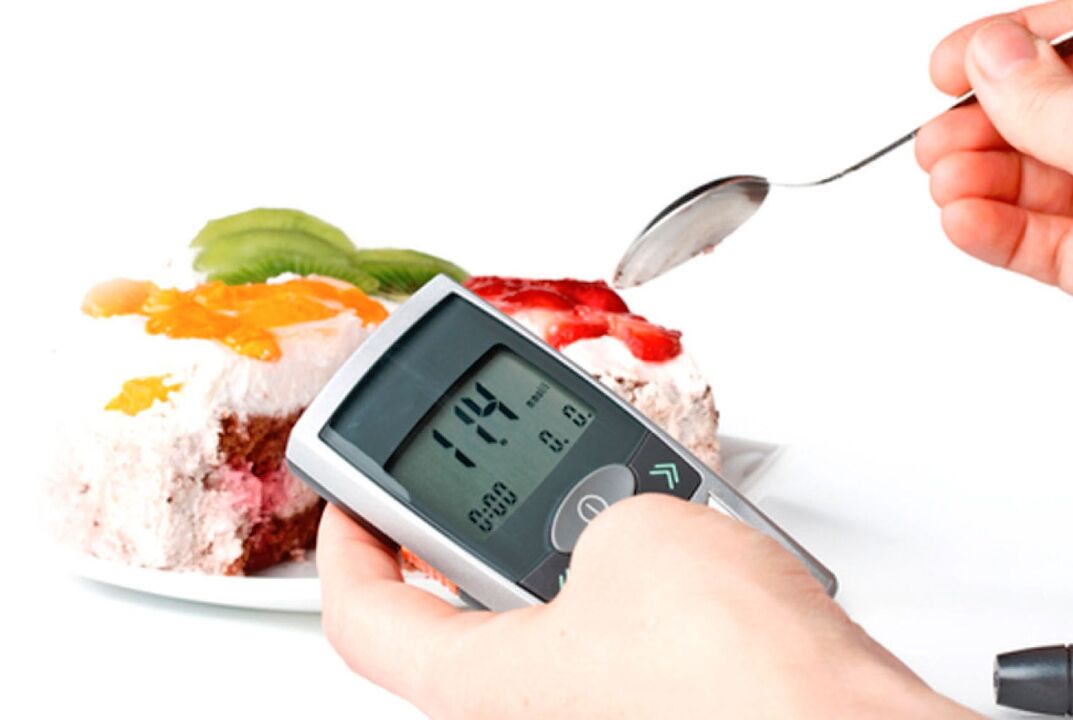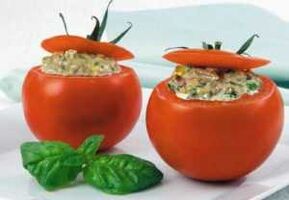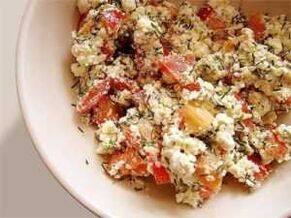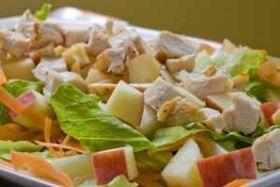
In fact, it is not difficult to prepare meals for diabetic patients. We are not talking about special diets. In type 1 and type 2 diabetes, a balanced diet plays an important role. It is suitable not only for people who are sick, but also for healthy people.
Do not

The first fact is that diabetes nutrition includes the restriction of all direct sugars: diabetic dishes (first course, second course and even desserts) do not contain sugar or honey, and do not include sweets-cakes, ice cream, desserts (apple pie, fruit pudding)), pancakes, etc. ), biscuits, candies, cakes, chocolate, sugary drinks and juices, etc. , greasy and fried foods, fatty meats and sausages, beer, alcohol, white bread or black bread (usually with caramel added), and anyProducts made from white flour.
In addition, dried fruits, wine, plums and pears should be completely avoided. Regarding alcoholic beverages, excluding beer, only drink dry alcohol, up to 200 ml per day, and finally drink hard alcohol, and it is very pure. Remember to add alcohol to your daily calorie intake.
Yes
Eat only whole wheat bread. The meat can be cooked, but it is definitely lean!
Be careful with the side dishes, if you want to cook dumplings or dumplings, don't forget to keep track of the portion size. Rice, pasta, and potatoes are more suitable.
For diabetes, the diet should include vegetables (and should also be eaten raw) because they contain vitamins, minerals, protein and almost no (or very little) sugar. In vegetables, you need to limit carrots, peas and corn. Fruit can be consumed at most once a day, and is best used as a breakfast snack.
It is recommended to divide the food into 4-6 small meals every day and make a small snack in the evening. The choice of diabetic recipes and food amounts should be based on whether your weight is within the normal range or whether you need to lose weight, and the amount of exercise you do during the day.
For all diabetics, it is appropriate to exercise for at least 30 minutes a day; brisk walking, running, swimming, cycling, etc. work well.
You need to walk at least 10, 000 steps a day.
Understandably, sometimes the diet plan can seem unbearable, and there will be an irresistible urge to eat something "forbidden". Once a month, you can relax and enjoy dark chocolate (chocolate is suitable for cooking or chocolate with 60-70% cocoa).
If you decide to change your eating habits, it is recommended that you first consult your doctor or specialist, such as a diabetes specialist, to understand the subsequent adjustments to diabetes medications and insulin doses (if given). It is recommended to use a blood glucose meter for self-monitoring.
Diet and health-preserving measures are indispensable (whether it is treatment or insulin, etc. ), and are the basis for successful treatment of all diabetic patients! These facts are confirmed by a large number of professional scientific research institutes in my country and the world.
Diabetes diet
Contraband:

- Fat dairy products.
- Egg yolk and its products.
- sausage.
- Fatty-goose, duck.
- Concentrated alcohol.
- Free sugar.
- candy.
- Salty snacks-potato chips, nuts, snacks, etc.
Recommended Products:
- Fats—butter, margarine, milk, and dairy products—are low in fat.
- Meat-young animals (veal, pork, lamb, chicken, rabbit, turkey).
- Fish-freshwater and ocean.
- venison.
- Ham-a small amount.
- Vegetables-all types, including beans.
- Fruit-a small amount.
- The bread is whole wheat.
The technical methods that can be used are boiling, stewing, grilling, and rarely-frying.
Here are some diabetic recipes, from soups and main dishes to desserts, suitable for diabetics.
The amount of raw materials contained in the following diabetes recipes is designed to be 4 servings.
Weight loss soup for diabetics
Soybean Soup
raw material:
60 grams of soybeans, 20 grams of flour, 20 grams of butter, 20 grams of onions, garlic, parsley, and salt.
Prepare:
Soybeans should be cooked until cooked or canned. Foam the chopped onions in the butter, add flour and hot water. Bring to a simmer, add cooked soybeans, chopped garlic, salt and chopped parsley. The cooked soup is best eaten while it is hot.
Dietary staple food for people with diabetes
Fried Halibut
raw material:
600 grams of flounder, 20 grams of butter, salt, sweet pepper, 10 grams of wheat flour, 1 lemon.
Prepare:
Wrap the fish in wheat flour mixed with salt and pepper, drizzle with oil and grill. Season the finished dish with lemon juice and garnish with lemon wedges.
Stewed beef
raw material:
320 grams of meat (beef, veal, pork, rabbit, but assorted is best), 200 grams of tomatoes, 40 grams of oil, 1 onion, 20 grams of potatoes, salt, parsley, marjoram, cumin.
Prepare:
The skinless pieces of meat are quickly fried in oil and covered with hot water. Add salt, chopped tomatoes, whole peeled onions, and simmer. When the meat is almost tender, add peeled and grated raw potatoes, cumin powder and marjoram. Remove the onion from the finished stew (leave it if it is already boiled) and add the chopped parsley.
Diet vegetable dishes for diabetics
Stuffed tomatoes

raw material:
4 large hard tomatoes, 120 grams of poultry, 20 grams of rice, 20 grams of butter, 1 egg, salt.
Prepare:
Cut off the top of the washed tomatoes and remove the middle part. Boil the washed rice with salt water, add minced poultry meat, salt, and beaten eggs and mix well.
Fill the prepared tomatoes with no middle part with the resulting mixture, cover them with the cut tops, and put them in a lightly oiled container. Add hot water, cover and simmer.
Boil the removed core, grind and add to the finished dish.
Vegetable risotto
raw material:
160 grams of rice, 20 grams of carrots, 20 grams of broccoli, 15 grams of celery, 15 grams of parsley, 10 grams of corn, oil, parsley, salt, 120 grams of hard cheese.
Prepare:
Cut all peeled vegetables into cubes or grind them with a coarse grater. Cut the legs from the cauliflower and divide the head into small inflorescences. Rinse the corn. Wash the rice, add oil, water, and salt, and boil until boiling. After a while, add the prepared vegetables and simmer until tender. Serve the finished risotto, sprinkle with chopped parsley and grated hard cheese.
Cold meals for diabetic people
Cheese with vegetables

raw material:
200 grams of cheese, 40 grams of milk, 1 tomato, 20 grams of leeks, 40 grams of cucumber, salt, cumin powder.
Prepare:
Peel the tomatoes, remove the seeds from the pulp, peel the leeks and cut into thin strips, and grind the cucumbers on a coarse grater.
Whisk the salted cheese with a whisk and milk.
Add all the prepared vegetables to the curd block, and then add cumin powder to taste.
Tofu snacks
raw material:
200 grams cheese, 2 cloves of garlic, sesame seeds, salt, green onions, dill, parsley.
Prepare:
Crush the garlic with salt and mix with the cottage cheese. If necessary, dilute with water to form a dense substance. Chop the green onions and stir in the sesame seeds. Form a roll of cooked garlic curd and wrap it in a mixture of shallots and sesame seeds so that the surface is completely covered. Let the finished roll cool and harden.
Diet salad for diabetics
Apple Chicken Salad

80 grams of carrots, 60 grams of bean sprouts, 200 grams of sour apples, 100 grams of cooked chicken breast, salt, 10 grams of butter, and lemon juice.
Prepare:
Grate the peeled carrots with a coarse grater, wash the apples, remove the cores, cut into slices, and then cut into thin strips, just like ready-made chicken.
Mix all the prepared ingredients together, add bean sprouts, salt, drizzle with oil and lemon juice. Stir well again and let cool.
Five misunderstandings about diabetes
Diabetes is a chronic, lifelong disease, full of complications. People who are affected by it must learn to tolerate it and adapt their pace and style of life to it. Although this topic is widely discussed in society, there are still many myths surrounding this disease. Let's take a look at the main ones. so…
Misunderstanding: Diabetes is a disease of obese people.
People rarely realize the difference between type 1 and type 2 diabetes. Type 1 diabetes can develop in childhood. The disease is genetically determined and requires insulin therapy. In contrast, as mentioned above, type 2 diabetes is often associated with being overweight. The disease is characterized by slow onset.
Misunderstanding: Diabetes is an "old age" disease.
As there are many obese children and young people today, type 2 diabetes is increasingly affecting younger people.
Misunderstanding 2: People with diabetes must not eat sweets and must strictly control their diet.

Diet is of course important, but it is not about eliminating carbohydrates completely. Diabetics cannot eat simple sugars (glucose), beet sugar (sucrose) and honey. However, they can use artificial sweeteners. Diabetics should eat complex carbohydrates (starches).
For diabetes, sweets can only be replaced with sweets-sweeteners, fruits. For example, you can eat two or three peaches, two oranges or three apples. Or you can eat something made with sweeteners.
Nutritionists recommend preparing sweets at home. This method ensures that the dishes are free of harmful preservatives and additives. From the available and permitted products, you can prepare any delicacy and treat yourself and your loved ones with delicious desserts.
Misunderstanding: People with diabetes can eat well, they only need to eliminate sugar.
As mentioned earlier, diabetes management involves regulating carbohydrate intake. The complex carbohydrates in the diet should be present in the same amount every day, which is up to the doctor. The prescribed amount must be distributed throughout the day, because diabetics must eat regularly. The dietary principle of diabetic patients is consistent with the principle of balanced nutrition, so it is not only for regulating sugar, but for the overall dietary structure. The essence of the disease lies not only in the metabolic disorder of the carbohydrate level, but also in protein and fat.
Myth: Diabetics can eat as many fruits as they can.
Fruit contains a certain amount of carbohydrates. Obviously, the daily diet of diabetic patients should include these content. Therefore, you cannot eat any amount of fruit. It is best to choose those with the lowest carbohydrate content and rich in fiber, which is important for digestion.














































































